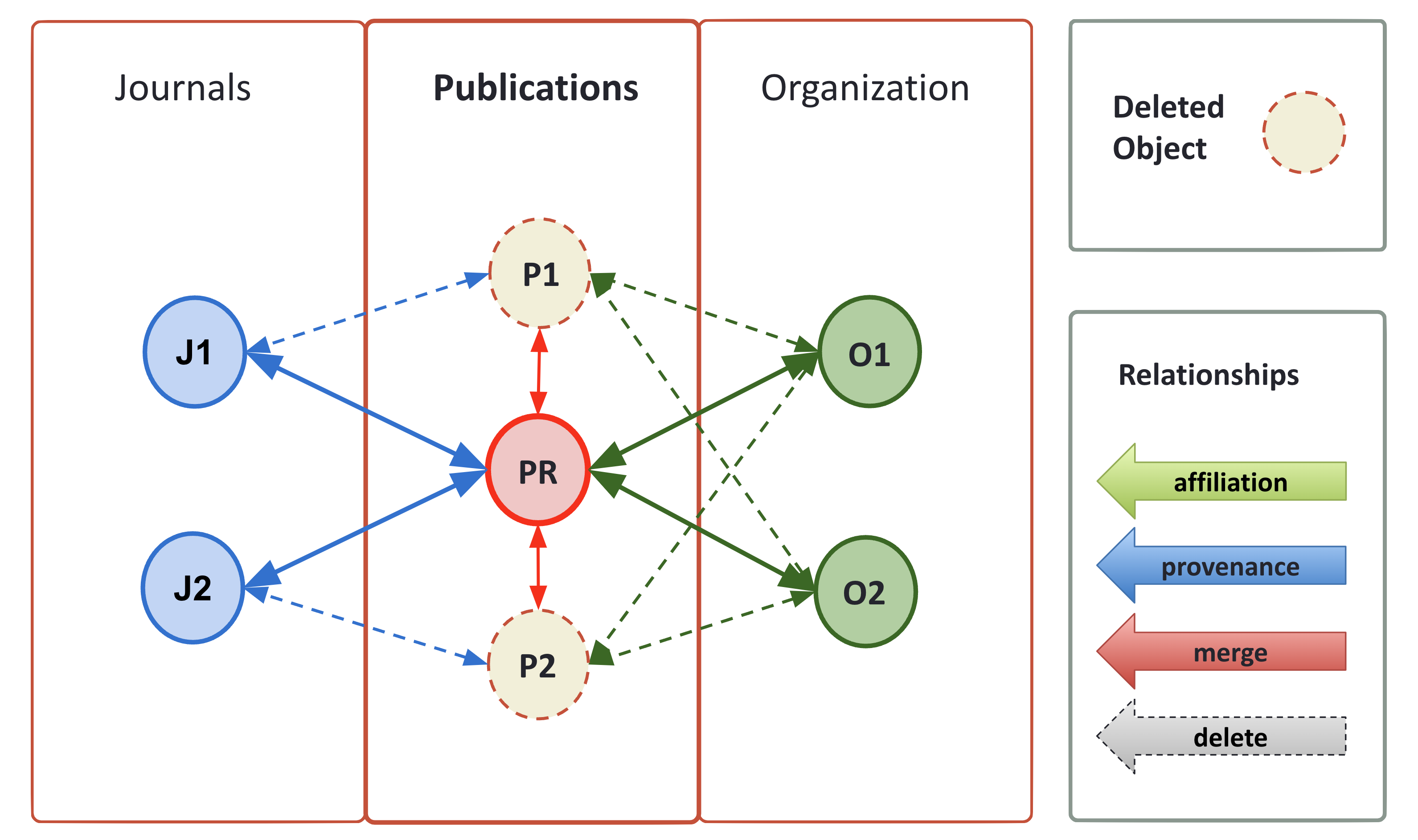Deduplication
The OpenAIRE Graph is populated by aggregating metadata records from distinct data sources whose content typically overlaps. For example, the collection of article metadata records from publisher' archives (e.g. Frontiers, Elsevier, Copernicus) and from pre-print platforms (e.g. ArXiv.org, UKPubMed, BioarXiv.org). In order to support monitoring of science, the OpenAIRE Graph implements record deduplication and merge strategies, in such a way the scientific production can be consistently statistically represented. Such strategies reflect the following intuition behind OpenAIRE monitoring: "Two metadata records are equivalent when they describe the same research product, hence they feature compatible resource types, have the same title, the same authors, or, alternatively, the same PID". Finally, groups of duplicates can be whitelisted or blacklisted, in order to manually refine the quality of this strategy.
It should be noticed that publication dates do not make a difference, as different versions of the same product can be published at different times; e.g. the pre-print and a published version of a scientific article, which should be counted as one object; abstracts, subjects, and other possible related fields, are not used to strengthen similarity, due to their heterogeneity or absence across different data sources. Moreover, even when two products are indicated as one a new version of the other, the presence of different authors will not bring them into the same group, to avoid unfair distribution of scientific reward.
Groups of duplicates are finally merged into a new "representative record", having its own id, embedding properties of the merged records and carrying provenance information about the data sources and the relative "instances", i.e. manifestations of the products, together with their resource type, access rights, and publishing date.
Methodology overview
The deduplication process can be divided into five different phases:
- Collection import
- Candidate identification (clustering)
- Duplicates identification (pair-wise comparisons)
- Duplicates grouping (transitive closure)
- Relation redistribution

Collection import
The nodes in the graph represent entities of different types. This phase is responsible for identifying all the nodes with a given type and make them available to the subsequent phases representing them in the deduplication record model.
Candidate identification (clustering)
Clustering is a common heuristics used to overcome the N x N complexity required to match all pairs of objects to identify the equivalent ones. The challenge is to identify a clustering function that maximizes the chance of comparing only records that may lead to a match, while minimizing the number of records that will not be matched while being equivalent. Since the equivalence function is to some level tolerant to minimal errors (e.g. switching of characters in the title, or minimal difference in letters), we need this function to be not too precise (e.g. a hash of the title), but also not too flexible (e.g. random ngrams of the title). On the other hand, reality tells us that in some cases equality of two records can only be determined by their PIDs (e.g. DOI) as the metadata properties are very different across different versions and no clustering function will ever bring them into the same cluster.
Duplicates identification (pair-wise comparisons)
Pair-wise comparisons are conducted over records in the same cluster following the strategy defined in the decision tree. A different decision tree is adopted depending on the type of the entity being processed.
To further limit the number of comparisons, a sliding window mechanism is used: (i) records in the same cluster are lexicographically sorted by their title, (ii) a window of K records slides over the cluster, and (iii) records ending up in the same window are pair-wise compared. The result of each comparison produces a similarity relation when the pair of record matches. Such relations will be consequently used as input for the duplicates grouping stage.
Duplicates grouping (transitive closure)
Once the similarity relations between pairs of records are drawn, the groups of equivalent records are obtained (transitive closure, i.e. “mesh”). From such sets a new representative record is obtained, which inherits properties from the merged records and keeps track of their provenance.
Relation redistribution
Relations involved in nodes identified as duplicated are eventually marked as virtually deleted and used as template for creating a new relation pointing to the new representative record. Note that nodes and relationships marked as virtually deleted are not exported.
